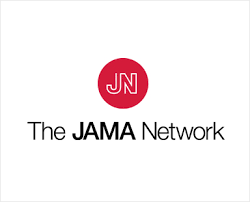Cryo nerve ablation cuts pain, narcotic use after heart surgery

Editor's Note A freezing technique applied during heart surgery is reducing pain, shortening recovery times, and minimizing the need for narcotics, News 9/CBS News August 13 reports. The procedure, called cryo nerve ablation, involves freezing nerves around the ribs to block pain signals for about 60 days. The nerves eventually…
Study: Feedback-based intervention boosts opioid prescribing adherence without worsening pain control

Editor's Note Providing tailored feedback to surgical prescribers significantly increased adherence to opioid prescribing guidelines without affecting patients’ ability to manage postoperative pain, according to research published June 11 in JAMA Surgery. The study tested whether monthly reports that included peer prescribing comparisons and patient-reported outcomes could influence opioid prescribing…
Study: Racial, insurance disparities persist in access to buprenorphine after opioid-related events

Editor's Note Black and Hispanic patients remain significantly less likely than White patients to receive buprenorphine after an opioid-related health care event, according research published June 26 in JAMA Network Open. Patients with Medicaid or Medicare Advantage also had higher odds of receiving buprenorphine than those with commercial insurance. The…
Painkiller without opioid risks shows potential in animal trials

Editor's Note An experimental compound developed at Duke University School of Medicine provides strong pain relief without the side effects or addiction potential of opioids, according to a May 19 announcement from the university. Known as SBI-810, the drug targets a specific receptor in the nervous system and uses a…
Outpatient, ASC clinicians share perspectives on upcoming NOPAIN Act implementation

Editor's Note On October 14, Anesthesiology News published a monograph featuring clinical perspectives on how “those working in the trenches of postsurgical pain management” are preparing for the Non-Opioids Prevent Addiction in the Nation (NOPAIN) Act, which outlines new, separate Medicare reimbursement for certain non-opioid analgesics in outpatient and ambulatory…
HHS announces $75 million investment in rural healthcare

Editor's Note The Health Resources and Services Administration (HRSA), part of the US Department of Health and Human Services (HHS), has announced nearly $75 million in funding to address critical challenges in rural health, including opioid treatment, maternal health care in the South, and supporting the financial stability of rural…
Study: Nearly 10% of patients on prescription opioids develop dependency or disorder

Editor's Note Research reveals nearly 10% of patients treated with prescription opioid painkillers develop opioid dependency or opioid use disorder (OUD), Healio reported on August 13. Additionally, nearly 30% of patients exhibit signs and symptoms indicating potential OUD. Originally published in the journal Addiction, the data are from a systematic…
Study on pre, postop opioid use reveals improvements needed for managing young patients

Editor's Note Many youths continue to take opioids months after undergoing surgery, according to a recent multi-institutional study published in JAMA Network. Medical Xpress covered the news July 11. Conducted by researchers from CHOP, Massachusetts General Hospital, University of Pennsylvania, and Stanford Medicine, the study found 1 in 6 youths…
ASA urges public to learn to recognize opioid overdose and how to use naloxone
Editor's Note The American Society of Anesthesiologists (ASA), on March 29, issued a news report urging the public to learn to recognize and respond to an opioid overdose, now that the Food and Drug Administration has approved naloxone for sale over the counter. Naloxone, which is commonly sold as a…
Telehealth care, MOUD during COVID-19 reduced risk for fatal drug overdoses
Editor's Note This study led by researchers from the Centers for Medicare and Medicaid Services and Centers for Disease Control and Prevention finds that federal actions taken to expand telehealth use for Medicare patients with opioid use disorder (OUD) and to facilitate provision of medications for OUD (MOUD) were associated…

 Free Daily News
Free Daily News